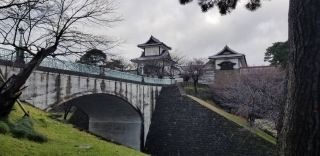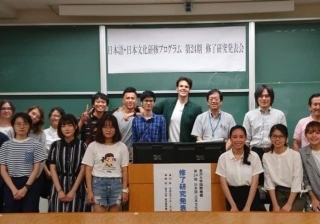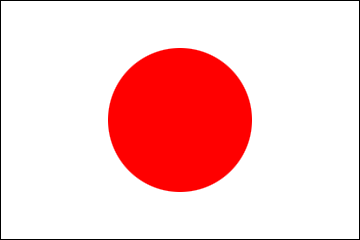My Time as a MEXT Scholar in Kanazawa
2021/5/17
 A view of Kanazawa Castle, located in the center of the city.
A view of Kanazawa Castle, located in the center of the city.
By Ryan Stewart (MEXT Scholarship Recipient)
Introduction
In the fall of 2017, my professor at UC Davis asked me if I would be interested in a full ride scholarship to go study in Japan for a year. As a Japanese major, of course I was interested! As it turns out, UC Davis has an agreement with Kanazawa University, located in the capital city of the Ishikawa prefecture, to let a student majoring in Japanese apply for a year-long study abroad program through MEXT, during which time they are given the opportunity to research a topic of their choosing related to Japan, write a thesis (in Japanese!) on said research, and give a presentation on their findings. The prospect intrigued me. Before studying at UC Davis, I had never actually heard of MEXT. In fact, the perks associated with the scholarship, such as a generous monthly stipend and airfare being included, made it almost seem too good to be true at first, until I discovered that it was a renowned program operating under the auspices of the Japanese government. It goes without saying that this made me even more interested in applying.
Introduction
In the fall of 2017, my professor at UC Davis asked me if I would be interested in a full ride scholarship to go study in Japan for a year. As a Japanese major, of course I was interested! As it turns out, UC Davis has an agreement with Kanazawa University, located in the capital city of the Ishikawa prefecture, to let a student majoring in Japanese apply for a year-long study abroad program through MEXT, during which time they are given the opportunity to research a topic of their choosing related to Japan, write a thesis (in Japanese!) on said research, and give a presentation on their findings. The prospect intrigued me. Before studying at UC Davis, I had never actually heard of MEXT. In fact, the perks associated with the scholarship, such as a generous monthly stipend and airfare being included, made it almost seem too good to be true at first, until I discovered that it was a renowned program operating under the auspices of the Japanese government. It goes without saying that this made me even more interested in applying.
 Me in the center, with my fellow Nikkensei and some of the awesome professors of Kanazawa University.
Me in the center, with my fellow Nikkensei and some of the awesome professors of Kanazawa University.
The Application Process
Of course, it wasn’t as simple as deciding I wanted to go and then hopping on the next plane for Japan. The application process itself was fairly involved. While it’s common to apply for a MEXT scholarship through the Japanese Consulate itself, in my case I was applying directly to the university for a recommendation. While the relationship UC Davis has with Kanazawa University granted me the opportunity for them to hear me out, it wasn’t guaranteed that I would be accepted. I had to draft a research outline, a daunting task for someone who had never done any sort of formal research before, and submit that along with an essay describing my prospective research interests and intended research methods, as well as stating my case for why I thought the program would be a good fit for me. This was followed by a video interview with the professor in charge of the program at Kanazawa University, who asked me questions about my research topic as well as questions about myself. The interview was conducted in April, and I was on tenterhooks until July when I was told that I had been accepted to Kanazawa University as a Nikkensei, a Japan studies student, and had been granted a MEXT scholarship! I was to start in September of that year, 2018, and stay in Kanazawa until August of 2019. I was ecstatic, but also a bit anxious, as I wasn’t quite sure what I had gotten myself into.
My Research, The Research Process, and My Fellow Nikkensei
Coming up with a research topic was a process in and of itself, and I went through many different ideas before finally hitting on the idea of privacy: namely, the differences in attitudes towards privacy between Japan and America. The idea came to me after purchasing a book at a bookstore in Japan and having the cashier ask me if I wanted to add a cover to my book. I found this curious as that isn’t something we really do in America, so I had to ask her why I might want to put a cover on my book. She explained to me that it was an option that bookstores in Japan tend to offer, for privacy reasons, in case someone doesn’t want everyone around them to see what they are reading. A lightbulb went off in my head and I wanted to research all the ways in which American and Japanese attitudes toward privacy differ and the ways in which they are alike. Though my research ultimately focused solely on differences in attitude towards privacy on social media websites, not book cover usage, it all started with that moment. (As an aside, if you are curious about if there are any differences in attitudes towards privacy on Instagram and Facebook between American and Japanese users, the quick answer is: not particularly, at least not according to my research!)
Something I truly enjoyed about my time as a Nikkensei is that the other research students in my cohort all had fascinating, original research ideas. One student from China was researching onigawara, the gargoyle-like ornamentations that adorn some temples and other structures in Japan, and a student from Indonesia was researching the linguistic aspect of the stickers used in LINE chats in Japanese conversation. Every day I found myself energized and inspired by the creativity and intellectual curiosity of my fellow Nikkensei; I felt like we all pushed each other to new heights, both as students and as researchers, in turns by being supportive and with our shared spirit of good-natured competition.
Of course, it wasn’t as simple as deciding I wanted to go and then hopping on the next plane for Japan. The application process itself was fairly involved. While it’s common to apply for a MEXT scholarship through the Japanese Consulate itself, in my case I was applying directly to the university for a recommendation. While the relationship UC Davis has with Kanazawa University granted me the opportunity for them to hear me out, it wasn’t guaranteed that I would be accepted. I had to draft a research outline, a daunting task for someone who had never done any sort of formal research before, and submit that along with an essay describing my prospective research interests and intended research methods, as well as stating my case for why I thought the program would be a good fit for me. This was followed by a video interview with the professor in charge of the program at Kanazawa University, who asked me questions about my research topic as well as questions about myself. The interview was conducted in April, and I was on tenterhooks until July when I was told that I had been accepted to Kanazawa University as a Nikkensei, a Japan studies student, and had been granted a MEXT scholarship! I was to start in September of that year, 2018, and stay in Kanazawa until August of 2019. I was ecstatic, but also a bit anxious, as I wasn’t quite sure what I had gotten myself into.
My Research, The Research Process, and My Fellow Nikkensei
Coming up with a research topic was a process in and of itself, and I went through many different ideas before finally hitting on the idea of privacy: namely, the differences in attitudes towards privacy between Japan and America. The idea came to me after purchasing a book at a bookstore in Japan and having the cashier ask me if I wanted to add a cover to my book. I found this curious as that isn’t something we really do in America, so I had to ask her why I might want to put a cover on my book. She explained to me that it was an option that bookstores in Japan tend to offer, for privacy reasons, in case someone doesn’t want everyone around them to see what they are reading. A lightbulb went off in my head and I wanted to research all the ways in which American and Japanese attitudes toward privacy differ and the ways in which they are alike. Though my research ultimately focused solely on differences in attitude towards privacy on social media websites, not book cover usage, it all started with that moment. (As an aside, if you are curious about if there are any differences in attitudes towards privacy on Instagram and Facebook between American and Japanese users, the quick answer is: not particularly, at least not according to my research!)
Something I truly enjoyed about my time as a Nikkensei is that the other research students in my cohort all had fascinating, original research ideas. One student from China was researching onigawara, the gargoyle-like ornamentations that adorn some temples and other structures in Japan, and a student from Indonesia was researching the linguistic aspect of the stickers used in LINE chats in Japanese conversation. Every day I found myself energized and inspired by the creativity and intellectual curiosity of my fellow Nikkensei; I felt like we all pushed each other to new heights, both as students and as researchers, in turns by being supportive and with our shared spirit of good-natured competition.
The City of Kanazawa Itself
All of this research took place against the backdrop of the beautiful city of Kanazawa. With its two rivers, abundance of trees, and status as the capital of its prefecture, it wasn’t too dissimilar from my own hometown of Sacramento, which helped me acclimate quickly. Kanazawa University also has a program for Nikkensei that pairs them with sato-oya (literally, “foster parent”), Kanazawa locals who are kind enough to take in a Nikkensei and be a support system of sorts to make the transition that much easier. My sato-oya were incredibly gracious and friendly, often having me over for dinner and showing me around Kanazawa and its environs to check out places that were off the beaten path, such as trips to a soy sauce factory on the outskirts of town that makes soy sauce ice cream - which was surprisingly delicious, I might add - and an excursion to a nearby entomology museum, as one of my hobbies is observing and taking photos of insects. They even took me to a Costco to buy things that I might be missing from America and would otherwise have a hard time finding in Japan!
All of this research took place against the backdrop of the beautiful city of Kanazawa. With its two rivers, abundance of trees, and status as the capital of its prefecture, it wasn’t too dissimilar from my own hometown of Sacramento, which helped me acclimate quickly. Kanazawa University also has a program for Nikkensei that pairs them with sato-oya (literally, “foster parent”), Kanazawa locals who are kind enough to take in a Nikkensei and be a support system of sorts to make the transition that much easier. My sato-oya were incredibly gracious and friendly, often having me over for dinner and showing me around Kanazawa and its environs to check out places that were off the beaten path, such as trips to a soy sauce factory on the outskirts of town that makes soy sauce ice cream - which was surprisingly delicious, I might add - and an excursion to a nearby entomology museum, as one of my hobbies is observing and taking photos of insects. They even took me to a Costco to buy things that I might be missing from America and would otherwise have a hard time finding in Japan!
